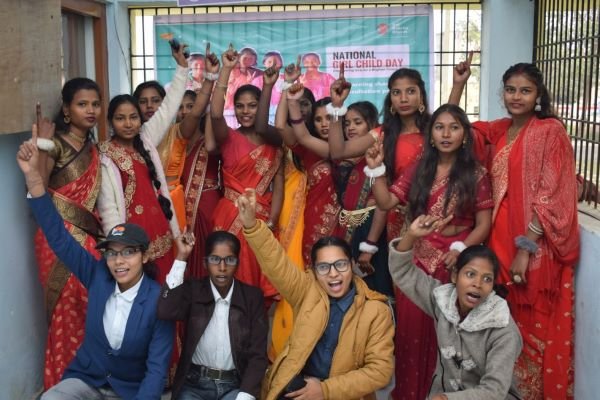CSR NEWS

India-UAE: Era Of Trust,The Relation Between India and UAE
The relation between India and (United Arab Emirates) UAE is strengthening with each passing day as both realise the potential and importance of each other. Both the nations are engaged in trading relations for centuries. But under Prime Minister Narendra Modi this partnership is growing to new heights and a new era has dawned.
Indian community is the largest expatriate community in the oil rich gulf state, numbering over 2.6 million. Indians also make up the largest ethnic group in the UAE making up roughly 30% of the total UAE’s residents. These economic migrants over the years have also made a significant economic contribution to India in the form of remittances worth billions of dollars. India is the largest trading partner of the UAE, while the UAE is India’s third largest trading partner. Indian businessmen and traders have contributed significantly to the economic fabric of UAE. The UAE occupies a key place in India’s West Asia policy. The political and diplomatic engagements with the UAE have seen a substantial increase in recent times.
Indian professionals also occupy important positions in various banks, private companies and business establishments in the country. The unskilled and semi skilled workers from India are a dominant force in the construction industry. The contribution of Indians to the growth of UAE is even acknowledged by the rulers and the people of UAE.
 Prime Minister Narendra Modi at the Sheikh Zayed Grand Mosque
Prime Minister Narendra Modi at the Sheikh Zayed Grand Mosque
Though India and the UAE have had historical ties, no Indian prime minister had visited the country in over three decades, the last one being by the then Prime Minister Indira Gandhi in 1981. The partnership between the two countries began to expand with Modi’s visit to the UAE in 2015. The UAE had also pledged an investment of $75 billion in Indian infrastructure projects.
Relations further strengthened when Abu Dhabi’s Crown Prince Sheikh Mohamed bin Zayed Al Nahyan visited India in February 2016. Sheikh Mohammad’s first state visit to India in 2016, on the invitation of Modi, elevated the friendly relationship to a comprehensive strategic partnership. The ties then took a step forward with the Crown Prince’s invitation as the chief guest at India’s Republic Day parade in January 2017. The UAE also expressed a reciprocating sentiment: the world’s tallest building, BurjKhalifa, was lit in the Indian tri-colour showcasing strong cultural and trade bond between the two countries. The high-level visits from both sides have given a new impetus to this partnership. In May 2016, Manohar Parikkar became first Indian Defence Minister to visit UAE to engage with his UAE counterpart and discuss possibilities of enhancing defence relations.
Both the countries are looking to expand cooperation in the areas of defence, maritime security, space, civilian nuclear energy and combating terrorism. Early this year UAE and India added a new momentum to their deepening bilateral engagement, by signing a total of 14 wide-ranging agreements including a strategic comprehensive partnership and deals on defence and maritime cooperation.
he UAE and India have pledged to come up with action plans by June to achieve their shared goal of expanding bilateral trade by 60 per cent over the next five years. Tourism sector is one of the areas that has good potential for future growth, especially medical tourism. Emiratis are already utilising Indian health services, including the ayurvedic establishments and spas while visiting India. Another area with considerable scope for cooperation in tourism is construction and maintenance of hotels. There is good scope for UAE to invest in the over-all tourism sector in India, which would help pull tourists visiting the UAE to India as well.
Both the nations signed an MoU on cooperation in the field of defence industry. With this both sides vowed to cooperate in defence manufacturing, transfer of technology and procurement of defence material. The leaders also discussed joint exercises and training of armed forces. The UAE will also explore opportunities of joint production of defence equipment under the ‘Make in India’ initiative.
Cooperation between the security agencies of both the nations has already helped India get access to operatives of terrorist outfits – who attempt to mingle with the South Asian Diaspora in the UAE – and the fact that the Emirates are no longer a safe haven for 1993 Mumbai blasts accused Dawood Ibrahim (who is believed to have abandoned the UAE and moved to Pakistan) and his cohorts.
 Indian Diaspora and its contribution to Gulf
Indian Diaspora and its contribution to Gulf
Since the 1970s’ oil boom, the Gulf region has been one of the principal destinations for workers from South Asia with the result that today Indians constitute a large percentage of the nonnationals living in the region. India has played a crucial role in transforming the region’s economies by providing skilled, semi-skilled, and unskilled workers. The majority of Indian expatriates are engaged in blue-collar jobs as semi-skilled and unskilled labourers, while the rest are white-collar professionals such as engineers, doctors, and architects. A majority of Indians live in the three largest cities of the UAE – Abu Dhabi, Dubai and Sharjah. Indian contact with the Emirates that now constitute the AE dates back several centuries, thanks to trade and commerce between the Gulf and India. More recently, the UAE has experienced a tremendous increase in the population of Indians who, having migrated to the country as a result of opportunities in petroleum, finance and other industries. While most Indian migrants support the financial, manufacturing, and transport industries, a sizeable minority of migrants are involved in professional services and entrepreneurship. Relations between India and the UAE have traditionally been friendly.

































